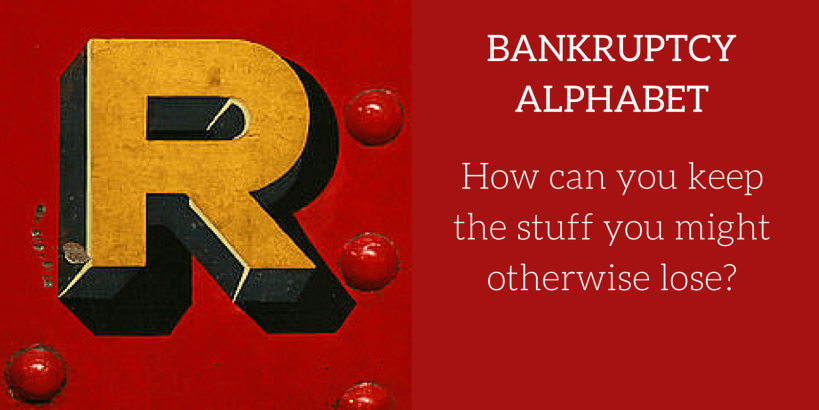When filing for bankruptcy, there’s more to be done than simply wiping out obligations. We can also swap out some bad debts for others that might be a little more comfortable for us. Welcome to the world of redemption.
In biblical terms, redemption is absolution for the past sins and/or protection from damnation. It’s a means of attaining salvation. That’s not too far off the mark in the world of bankruptcy.
In bankruptcy, redemption is the process by which you take a pay off an old secured debt with a new one that has better payment terms – including a balance that’s in line with the current value of the property.
Cool, huh? Let’s see how it works (and why).
What You Can Redeem
In order to go through the process of redemption you’ve got to be talking about tangible personal property intended primarily for personal, family, or household use. A car, for example, would work. So would a washing machine.
A copier in your office, however, wouldn’t fit the bill for redemption.
Nor would a home mortgage. We need to have personal property, but real estate is considered a different type of property.
Next we’ve got to have a secured debt on that property. If you bought the washing machine on credit and the loan was secured by the washing machine, you’re all set. If you took out a car loan, the loan is secured.
How To Redeem
Redemption is pretty simple. You’ve got to pay to the secured lender the amount of the allowed secured claim of such holder that is secured by such lien in full at the time of redemption.
Huh?
OK, that’s the wording of the U.S. Bankruptcy Code. Let me make it simpler. First you need to determine the amount of the secured claim – in other words, the value of the property as against the value of the loan.
If the property is worth $3,000 and the loan balance of $4,000 then only $3,000 of it is secured. If the property is worth $3,000 and the loan balance is $2,000 then the entire loan balance is secured.
Once you know the value of the property to determine the amount of the loan that is secured, you need to pay the balance of that secured debt to the lender. You’ll typically go through a motion process to get the court to issue an order concerning the redemption, but from time to time your lawyer will be able to negotiate with the lender directly.
Why Bother With Redemption?
You may have a secured debt with 15% interest accruing, and the payments may be choking you. You may be able to borrow from a 401(k) at a rate of 4% with all of the interest going back to you. Using redemption, you can swap out one debt for another – lowering payments and interest at the same time.
In the alternative, maybe you can lower the balance overall by redeeming the property. Either way, it’s something you should look into as a way of using the bankruptcy process to maximize your benefit.
Image credit: Leo Reynolds
